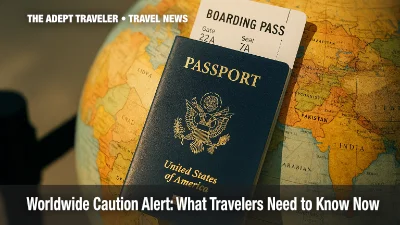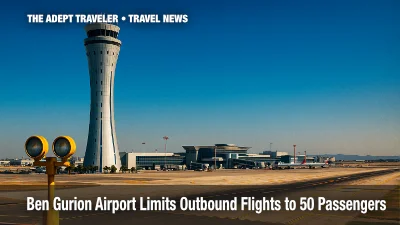Iran
Travel to Iran, a mesmerizing canvas of ancient history and vibrant culture, where the echoes of empires and the aromas of bustling bazaars weave a rich tapestry of experience. Picture yourself wandering through the ancient ruins of Persepolis, where majestic stone columns whisper tales of glorious Persian kings, or standing in awe under the kaleidoscopic dome of the Sheikh Lotfollah Mosque, its intricate tiles reflecting a symphony of blues and golds. As you travel further, let the fragrant scent of freshly baked flatbreads and spices draw you into the heart of Tehran's lively markets, where saffron, pistachios, and pomegranates paint a sensory feast for the adventurous palate. Feel the silken touch of Persian carpets beneath your fingertips, and let the lilting strains of traditional Iranian music transport you to a place where folklore dances gracefully with the present. Embark on an unforgettable journey as you travel to Iran, a land where every corner holds the promise of a new story waiting to be discovered, enticing travelers to delve deeper and explore the enchanting wonders that this captivating country has to offer.
Iran Travel Season
When considering travel to Iran, choosing the right season can significantly enhance your experience. Iran is a country of varied climates, owing to its large size and diverse topography. The peak travel season in Iran is generally during spring, from March to May, and in autumn, from late September to early November. During these months, the weather in Iran tends to be mild and pleasant, making it ideal for exploring the country’s historical sites, vibrant cities, and breathtaking landscapes.
Spring is perhaps the most delightful period for travel to Iran. The Iranian new year, Nowruz, which occurs in March, brings a festive atmosphere across the country. This celebration lasts two weeks and offers visitors a glimpse into Iran's rich cultural heritage, complete with traditional music, dance, and cuisine. During this time, cities and natural attractions may be busier due to local tourism, but the colorful festivities and welcoming spirit are rewarding.
The autumn months are also an ideal time to travel to Iran. The weather cools down after the hot summer, particularly in cities like Tehran, Isfahan, and Shiraz. This season offers the chance to explore lush gardens and historical monuments without the summer heat. Fewer tourists explore Iran during autumn compared to spring, providing a more intimate experience with shorter lines and less crowded attractions.
Travel to Iran during the summer can be challenging due to the extreme heat, especially in the desert regions and the southern part of the country. However, this is the best time to visit the cooler mountainous areas, such as the Alborz and Zagros ranges, where activities like hiking and climbing are popular. The northern coast, along the Caspian Sea, offers a more temperate climate and a chance to relax by the sea.
Winter travel to Iran, particularly in December, January, and February, finds the country experiencing a wide range of weather. The north and west can be quite cold with snow, which is great for winter sports enthusiasts interested in skiing at the resort near Tehran. Meanwhile, the southern parts, such as the islands in the Persian Gulf, have mild weather, making them accessible for beach and cultural tourism.
A distinct advantage of traveling to Iran during the off-peak seasons—summer and winter—is the opportunity to enjoy the country's attractions with fewer visitors. Accommodation and flight prices are often lower during these times, making travel to Iran more budget-friendly. Local bazaars are less crowded, allowing travelers a more relaxed shopping experience to buy Persian carpets, spices, and souvenirs.
When planning travel to Iran, it’s worth noting important cultural events and holidays, such as Ramadan, which varies annually according to the lunar calendar. While some businesses might have shorter hours during this holy month, it’s a unique time to gain insight into the local customs and partake in Iftar, the breaking of the fast, which is a communal affair with delicious Iranian meals.
Ultimately, the best time for travel to Iran is dependent on what travelers wish to experience. Whether it’s the colorful Nowruz celebrations in spring, the quiet serenity of historical sites in autumn, the adventurous spirit in the mountainous north in summer, or the cultural insights during winter, Iran offers unique experiences throughout the year.
The Weather and Seasons in Iran
The climate in Iran is incredibly diverse, influenced by its vast geographical expanse and varying altitudes. As travelers consider making a journey to Iran, understanding the country's distinct seasons and weather patterns can enhance the experience. Travel to Iran can offer a wide range of weather conditions depending on the specific region and time of year.
Spring in Iran
Spring, spanning from March to May, is a beautiful time for travel to Iran. During this period, most regions enjoy mild temperatures with pleasant weather. In the capital city of Tehran, temperatures range from 50°F to 75°F (10°C to 24°C). The landscape blossoms with greenery and flowers, providing an ideal backdrop for exploration. This season also marks Nowruz, the Persian New Year, a festive time filled with cultural events and celebrations. Rainfall is moderate, especially in the northern regions, adding a fresh feel to the air.
Summer in Iran
Iran experiences a hot and dry summer from June to September. Many travelers headed to Iran during these months should prepare for high temperatures, especially in the central and southern parts of the country. Cities like Yazd and Shiraz see temperatures soaring to 104°F (40°C) and above. In contrast, the northern Caspian coast remains milder, with temperatures around 80°F (27°C), making it a popular escape from the intense heat. Although humidity is generally low, the southern coastal areas along the Persian Gulf can be exceptionally humid.
Autumn in Iran
Autumn, from September to November, offers some of the most favorable weather conditions for travel to Iran. The country experiences mild temperatures, ranging from 55°F to 80°F (13°C to 27°C), and reduced humidity. The fall season sees the landscapes transform into a vibrant palette of autumn hues, enriching the experience for nature enthusiasts and photographers. Rainfall slightly increases, particularly in the western and northwestern regions, refreshing the air and bringing cooler temperatures.
Winter in Iran
Winter in Iran, from December to February, is characterized by a wide range of temperatures across the country. In the north and mountainous areas, such as the Alborz and Zagros ranges, travelers can expect snow and cold conditions, with temperatures dropping to as low as 28°F (-2°C). Conversely, southern regions like Bandar Abbas remain warm, with temperatures averaging 64°F to 77°F (18°C to 25°C). This season is perfect for visitors interested in skiing or exploring the unique desert landscapes in cooler weather.
Understanding these seasonal patterns is crucial for travelers planning a trip to Iran. Whether it's experiencing the lush springs, enduring the summer heat, enjoying the mild autumn, or embracing the winter snow, Iran's diverse climate caters to a variety of travel preferences. By considering these weather conditions, travelers can optimize their travel plans and embark on a memorable journey across this culturally and geographically rich nation.
Accepted Payment Methods and Other Payment Information in Iran
When planning your travel to Iran, understanding the local payment options is crucial for a seamless experience. The official currency in Iran is the Iranian Rial (IRR). Visitors will find that cash is king in Iran due to international banking restrictions that limit the use of popular international credit cards such as Visa, Mastercard, American Express, and Discover. It's important to note that these cards are generally not accepted in Iran because of sanctions and the country’s banking isolation from the global SWIFT network.
Travelers should instead rely on cash or consider obtaining a local prepaid travel debit card known as "Mah Card," specifically designed for foreign visitors. The Mah Card allows users to make purchases and withdraw cash, thus offering a convenient solution for tourists during their travel to Iran. Since there are no ATMs linked to international networks, withdrawing Rials before your trip or bringing foreign currency such as U.S. dollars or euros for exchange is advisable.
Cash usage is prevalent in transactions large and small, from purchasing goods in bustling bazaars to paying for meals in restaurants or small hotel stays. When traveling to Iran, it’s helpful to familiarize oneself with Rials and banknote denominations to ease transactions. Additionally, although haggling is customary in Iranian markets, tipping is not obligatory but appreciated in sit-down restaurants, where a 10% tip is considered generous. Some higher-end establishments may include a service charge, so checking the bill first is recommended.
Another feature to note during your travel to Iran is the local currency system referred to as the "Toman." Although the Rial is the official currency, Iranians often use Toman in conversation, dropping one zero from the Rial value. This practice is widespread and essential for travelers to understand conversion accurately while shopping or paying for services.
Why You Should Travel to Iran
When considering your next international adventure, look no further than the captivating landscape and rich culture of Iran. The experience of travel to Iran offers unparalleled encounters with history, tradition, and nature. A country of ancient empires and dynamic cities, Iran is a must-visit destination for any globetrotter eager to experience the world in its most authentic forms.
Rich Cultural Heritage
Iran is home to one of the world's oldest civilizations, with a storied history that dates back thousands of years. Travelers are drawn to its wealth of historical sites, including 24 UNESCO World Heritage Sites. The ancient ruins of Persepolis and the architectural beauty of the Sheikh Lotfollah Mosque in Isfahan showcase Iran's influence as a major cultural and intellectual hub.
Exquisite Persian Architecture
The architectural beauty throughout Iran is staggering. Whether it's the intricate tile work of mosques or the palatial gardens that inspire awe, Persian architecture offers a feast for the eyes. Cities like Isfahan boast stunning examples such as Naqsh-e Jahan Square, celebrated for its harmonious proportions and vibrant patterns, making travel to Iran an aesthetic delight.
Warm and Hospitable People
One of the most compelling reasons to travel to Iran is its people. Known for their hospitality, Iranians warmly welcome visitors, often inviting them into their homes for tea or a meal. This genuine friendliness and eagerness to share their culture provide travelers with personal experiences that transcend typical tourist activities.
Culinary Delights
Iran offers a unique culinary journey that will satisfy any food lover. Iranian cuisine mixes fragrant spices with seasonal ingredients, creating dishes like saffron-infused kebabs and pomegranate stew. Each region of Iran has its own specialty, providing a diverse and delightful tasting adventure.
Stunning Natural Landscapes
From the rugged mountains to vast deserts, Iran's natural beauty captivates travelers. The Alborz Mountains offer skiing and hiking opportunities, while the golden dunes of the Lut Desert provide a striking backdrop for adventure. With its varied climates, Iran is ripe for exploration, making it a natural paradise for those who love the outdoors.
Vibrant Persian Art
Iran's artistic heritage is as rich as its history. With techniques passed down through generations, Persian art is renowned for its detailed miniatures and intricate carpets. Travelers can explore this vibrant craft in person by visiting artisan workshops or museums like the Tehran Museum of Contemporary Art, an essential experience for anyone interested in the arts.
Intriguing Local Markets
Iran’s bustling bazaars are central to its social and economic life, offering an authentic glimpse into daily life. These markets are treasure troves of goods like spices, textiles, and handicrafts. Places such as the Grand Bazaar in Tehran not only provide a unique shopping experience but also a cultural immersion as visitors negotiate prices over fragrant teas and traditional sweets.
Spiritual Significance
Iran is dotted with places of immense religious importance, offering spiritual insight to those traveling within its borders. The city of Qom and the holy shrine of Imam Reza in Mashhad attract pilgrims from all over the world. These sacred sites offer an opportunity for quiet reflection and an understanding of Iran's spiritual practices and beliefs.
Cultural Festivals and Celebrations
Participating in Iran’s colorful festivals is a fantastic way to delve deeper into its culture. The Persian New Year celebration of Nowruz, marked by dancing, music, and feasts, is a lively time to visit. Additionally, the cultural ceremonies are a testament to the enduring traditions of the Iranian people, providing unforgettable moments for travelers.
Unique Accommodation Options
Travel to Iran can be accentuated by staying in traditional guesthouses or restored caravanserais dating back to the Silk Road era. These unique accommodations offer more than just a place to sleep—they transport visitors back in time, enhancing the cultural travel experience. Exploring these lodgings, each with its unique story and architecture, adds an additional layer of enrichment to any journey through Iran.
The History of Iran
Iran, a land of rich cultural tapestry and ancient civilization, is a treasure trove for history enthusiasts who wish to travel to this enigmatic destination. Its strategic location as a crossroads connecting East and West has bestowed Iran with a heritage that spans multiple empires and influences. Visitors eager to travel to Iran are often captivated by its enduring legacy that dates back to the Achaemenid Empire, one of the largest empires of the ancient world. Established around 550 BC, the Achaemenid Empire was notable for its architectural marvels, administrative innovations, and cultural achievements, much of which can still be explored today. Persepolis, the grand ceremonial capital, is a UNESCO World Heritage site that offers a glimpse into the opulence and power of the empire with its intricately carved reliefs and towering columns.
The historical allure of Iran extends beyond the remnants of ancient Persian empires. The Sassanian Empire, another formidable power that flourished from 224 AD to 651 AD, left a profound influence on the region in terms of culture, art, and architecture. The ruins of the city of Bishapur and the bas-reliefs of Naqsh-e Rustam are testaments to the aesthetic achievements of the Sassanians. For travelers seeking to immerse themselves in medieval Islamic history, Iran offers cities like Isfahan and Shiraz, where grandeur is seen in stunning mosques and palaces adorned with exquisite Persian tiles and intricate mosaics. Isfahan, in particular, with its Naqsh-e Jahan Square and breathtaking mosques, is a focal point for those keen to understand the impressive Islamic architectural advancements that emerged centuries ago.
Cultural heritage in Iran is not only about historical monuments and sites but also about its vibrant traditions and contributions to art, poetry, and philosophy. Travelers will find Iran to be a land enriched by the works of famous poets like Rumi, Hafez, and Saadi, whose poetry continues to resonate around the world. Visitors can pay homage to these literary giants by visiting their tombs in Shiraz, a city brushed with romanticism and literary elegance. The bazaars of Iran, such as the historic Grand Bazaar of Tehran, are living museums that invite travelers to explore Iranian culture through its intricate handicrafts, vibrant textiles, and age-old trading practices.
Modern Iran offers a fascinating juxtaposition of ancient history and contemporary culture, shaped by dynamic recent historical developments. Travelers will find the vibrant city of Tehran, Iran's capital, a bustling metropolis that reflects the country's modern aspirations and its complex socio-political history. Museums such as the National Museum of Iran and the Tehran Museum of Contemporary Art serve as cultural beacons that provide insight into Iran's evolving identity. The blend of traditional and modern in Iran makes travel to Iran an exciting adventure, engaging history lovers with a broad spectrum of eras and experiences, from ancient empires to the rich cultural currents of today. As visitors explore Iran, they will no doubt be enchanted by the depth and diversity of a nation whose historical travails have indelibly shaped its present and continue to inspire those who journey to discover its many stories.
The Culture of Iran
Iran's culture is a mesmerizing tapestry of ancient traditions, rich history, and vibrant customs that invite travelers to embark on a captivating journey through its lands. At the heart of Iranian culture are deeply-rooted traditions that stretch back thousands of years, blending seamlessly with modern expressions. For those who travel to Iran, the Nowruz festival presents a remarkable spectacle. Celebrated at the vernal equinox, Nowruz heralds the Persian New Year with festivities steeped in symbolism, including the "Haft-Seen" table set with seven items that each symbolize a concept such as rebirth, affluence, and patience. During this time, families gather to celebrate their heritage and the arrival of spring, providing travelers with an ideal opportunity to witness these heartfelt customs firsthand.
Daily customs in Iran are as intricate as the Persian carpets for which the country is famous. Traditional Persian hospitality, known as "Taarof," is a complex cultural practice that often baffles outsiders. This art of civility requires guests to refuse offers a few times before accepting and is a testament to the deep sense of respect and politeness in Persian society. These customs enrich the travel experience, offering insights into Iranian social etiquette. Moreover, travelers will notice the highly-regarded practice of sharing meals with family, friends, and even strangers. Persian cuisine itself is an extension of these customs—aromatic, colorful, and abundant, symbolizing the cultural value placed on generosity and community.
The artistic expressions of Iran are equally compelling and diverse, encompassing music, literature, and visual arts that narrate the nation's enduring legacy. Persian music, with its distinctive modal system called "dastgah," captivates listeners with its melodic and rhythmic complexity. The rich tradition of Persian poetry, led by literary giants like Rumi and Hafez, continues to inspire and connect people worldwide, showcasing a unique blend of mysticism and philosophical depth that intrigues visitors who travel to Iran. Additionally, traditional Persian art forms like miniature painting and calligraphy are an integral part of Iran's visual language, while contemporary artists push boundaries by weaving modern themes into these ancient crafts.
Iran is home to a remarkably diverse population, with ethnic groups such as Persians, Kurds, Azeris, and Lurs contributing to the country's cultural mosaic. This multiculturalism, when combined with local traditions, enhances the cultural experience and provides travelers with a nuanced understanding of Iranian heritage. Indigenous cultures, such as those in the regions of Baluchistan and Khuzestan, add another layer of diversity. In these areas, efforts are underway to preserve traditions, languages, and crafts, appealing to travelers interested in cultural preservation. The blend of these influences results in a culturally rich environment where historical and contemporary narratives coexist, creating a unique destination for those who travel to Iran.
The Culinary Experience of Iran
When you travel to Iran, prepare yourself for a remarkable culinary journey that is both a feast for the senses and a portal into the country's vibrant culture and history. Iran's cuisine is incredibly diverse, shaped by varied climates and regional influences, which range from the hearty stews of the north to the spicy delicacies of the Persian Gulf. As you traverse the cities and countryside, you'll encounter an array of dishes that combine fragrant herbs, rich spices, and fresh ingredients—true hallmarks of Iranian cooking. Each meal is an event in its own right, a gesture of hospitality that emphasizes the importance of food in bringing people together.
A must-try dish for anyone stepping foot in Iran is "Ghormeh Sabzi," a beloved Persian stew made with fresh herbs, kidney beans, and tender lamb. Equally enticing is "Fesenjan," a sumptuous, slow-cooked dish featuring pomegranate syrup and ground walnuts, often paired with duck or chicken. For those willing to venture into more street-food territory, "Kebabs" offer succulent grilled meats, often accompanied by flatbreads and aromatic rice. Don’t miss out on the whimsical flavors of "Ash-e Reshteh," a thick soup made from noodles, beans, and herbs, imbued with the signature tang of kashk, a type of whey. These culinary delights reflect the layered flavors and cultural richness you can experience when you travel to Iran.
The beverages you’ll find also reflect Iran’s unique cultural tapestry. While the traditional Islamic laws mean alcoholic beverages like wines, spirits, and beers are absent, Iran offers an impressive array of non-alcoholic drinks. Experience the refreshing notes of "Doogh," a yogurt-based drink with a hint of salt and mint, perfect for cooling off in the arid climate. Traditional tea, or "Chai," is an integral part of social life and is often served with sweets, offering a warm welcome when you travel to Iran. For a unique experience, the traditional tea houses or "Chaikhaneh" are fascinating spots where you can indulge in rich flavors amidst traditional décor.
Food markets and dining experiences in Iran offer yet another layer of intrigue. The bustling bazaars of Tehran or Isfahan are not just places to purchase spices or street snacks but are cultural landmarks that offer insights into everyday life. Fine dining establishments in cities like Shiraz or Yazd provide contemporary twists on traditional recipes. For those with dietary restrictions, you'll find that the natural diversity in Iran's cuisine makes it easier to find vegan and vegetarian options, with cuisines rich in legumes, herbs, and vegetables. Seasonal foods and festivals—such as the almond blossoms in early spring or saffron harvests in autumn—offer specific culinary experiences, providing reasons to travel to Iran at different times of the year.
What to See and Do in Iran
If you're planning to travel to Iran, the diverse tapestry of landscapes, cultures, and histories that the country offers beckons with a lure that’s irresistible. Iran is a destination filled with vibrant cities, breathtaking vistas, historical sites, and unique cultural experiences that promise a transformative journey. Whether you're an adventure seeker, a history buff, or someone traveling with family, Iran's attractions are both plentiful and profound.
Explore the Ancient Splendor of Persepolis
Persepolis, a UNESCO World Heritage site and the ceremonial capital of the Achaemenid Empire, is an archaeological gem that every traveler to Iran should explore. This marvel of ancient architecture stands as a testament to the grandeur of one of the world's greatest empires, complete with towering columns and intricate bas-reliefs. Walking through this historical site offers a profound connection to ancient Persia’s sophistication and artistic prowess.
Discover the Vibrant Bazaars of Tehran
Tehran's bustling bazaars are an essential stop for anyone traveling to Iran seeking to immerse themselves in the lively atmosphere of its capital. The Grand Bazaar, with its labyrinthine corridors and lively vendors, offers everything from carpets to spices. As you wander, listen to the harmonious hum of trading conversations and enjoy the aromas that reflect the diversity of Iranian culture.
Get Lost in the Alleyways of Yazd
The ancient city of Yazd, with its earthen architecture and wind-catching towers, is a must-visit for those traveling to Iran. Its UNESCO-listed Old Town is a labyrinth of narrow, winding lanes lined with adobe houses and historic sites, like the Jameh Mosque, which exemplifies stunning Islamic architecture. Yazd is also the perfect place to learn about Zoroastrianism, with the Ateshkadeh (Fire Temple) and the Towers of Silence nearby.
Hike the Iconic Alborz Mountains
Adventure travelers to Iran will find the Alborz Mountains calling with promises of majestic views and challenging treks. Mount Damavand, the highest peak in Iran and the Middle East, offers both seasoned hikers and adventurous climbers a rewarding experience with panoramic views over the Caspian region. The surrounding national parks also provide opportunities for skiing and snowboarding during winter months.
Admire the Persian Gardens of Shiraz
Shiraz, renowned as the city of poets, roses, and wine, is home to the exquisite Persian gardens, each offering a serene escape and a glimpse into Iran's horticultural art. Eram Garden and Afif-Abad Garden, with their lush greenery and tranquil water features, provide a peaceful retreat for couples and families. The fragrance of flowers and the historical charm make these gardens a uniquely romantic experience.
Experience the Spiritual Heart of Iran in Mashhad
Mashhad, hosting the holy Shrine of Imam Reza, is the spiritual epicenter of Iran. This site is one of the most significant pilgrimage destinations for Shia Muslims, and its grandeur cannot be overstated. The stunning golden dome and vast surrounding complex offer an atmosphere of reverence and spirituality that attracts millions of visitors from around the world annually.
Marvel at the Architectural Beauty of Isfahan
The city of Isfahan is often referred to as "Half the World," a phrase that captures its historical and architectural grandeur. Naqsh-e Jahan Square, another UNESCO World Heritage site, is the centerpiece of Isfahan, showcasing the masterpieces of Safavid architecture like the Shah Mosque and Ali Qapu Palace. The Square buzzes with life and offers a great spot to enjoy traditional Iranian crafts and food.
Soak in the Natural Beauty of the Caspian Sea Coast
The lush northern regions of Iran, adjoining the Caspian Sea, provide the perfect setting for families and nature enthusiasts to explore and unwind. The dense Hyrcanian forests and serene beaches offer a natural contrast to Iran's arid regions. Delight in fresh seafood at local eateries and visit the picturesque village of Masuleh, where cascading houses create a unique architectural setting against a mountainous backdrop.
Embark on an Urban Adventure in the Mystical Desert of Kashan
Kashan is famous for its unique desert-oriented urban landscape and depth of historical significance, boasting stunning examples of early Persian residential architecture. The finely designed Tabatabaei House and the Sultan Amir Ahmad Bathhouse offer architectural splendor alongside a chance to indulge in culture and history. Travelers to Iran who venture into the surrounding desert landscapes can also explore the richly adorned Agha Bozorg Mosque and nearby Maranjab Desert.
Delve into Iran’s Culinary Heritage
No travel to Iran is complete without delving into its rich culinary landscape. From hearty stews like Ghormeh Sabzi and Fesenjan to freshly baked bread and rich saffron-infused dishes, Iran's food scene is a mosaic of regional flavors and centuries-old traditions. Enjoy these delicacies at local eateries or by taking part in a Persian cooking class, which is an enriching way to engage with the culture through its most delicious expression.
Tips & Tricks for Traveling in Iran
Understand Iran's Cultural Etiquette
Traveling to Iran involves engaging with deeply rooted cultural traditions and customs. Dress modestly as Iran adheres to Islamic dress codes—women should cover their hair with a scarf and wear loose-fitting clothing covering arms and legs, while men should avoid shorts. Greetings are typically one of respect, often accompanied by a handshake if you are the same gender. Avoid discussing politics or religion unless invited to do so by your host, as these are sensitive topics. A basic understanding of Persian, or Farsi, phrases can go a long way in showing respect and will be warmly received by locals.
Mastering the Iranian Transportation System
Navigating your travel through Iran is made simpler with an understanding of its transportation system. Buses are economical and extensively networked across cities, while trains offer another reliable alternative with scenic views. In cities like Tehran, the metro can save you from the traffic congestion and is quite affordable. If comfort is a priority, private rideshare apps such as "Snapp" are widely used and cheaper than taxis. Always agree on taxi fares beforehand if a meter isn't used, as this can prevent misunderstandings and overcharging.
Your Ultimate Budgeting Guide
When planning your travel to Iran, wise budgeting can enhance your experience without straining your wallet. Iran's currency is the Rial, but prices are often quoted in Toman (1 Toman = 10 Rials), so clarify this to avoid confusion. Street food and local restaurants offer an authentically delicious yet cost-effective dining experience. Bargaining in bazaars is expected and can be an enjoyable interaction—start low but remain polite throughout. Keep small notes handy for souvenir purchases, street vendors, and tipping.
Capture Iran's Beauty as a Photographer
For photographers traveling to Iran, the country offers diverse and breathtaking landscapes—from the urban splendor of Isfahan to the ancient ruins of Persepolis and the serene deserts of Yazd. Always ask permission before photographing people, particularly women, as a sign of respect for personal privacy. Early morning or late afternoon provides the best light for capturing the intricate mosaic designs of mosques or the sprawling bazaars. Be sure to check whether photography is allowed at historical sites, as some areas have restrictions.
Avoiding Crowds During Your Visit
To maximize your travel experience in Iran, consider the timing of your visits to popular sites. Early mornings or lunch breaks during weekdays can be less crowded, allowing you quality interaction with locals and fewer interruptions for that perfect photo. Steer clear of major Islamic holidays, such as Nowruz (Persian New Year), when attractions and public transportation are at their busiest. Traveling off-season, especially from November to March, offers quieter historical sites and milder weather, particularly in southern regions.
Experience Iranian Cuisine
Iranian cuisine is a vital part of your travel experience to Iran, offering a variety of flavors intertwining aromatic spices with fresh ingredients. Make sure to try dishes like "Kebab," "Fesenjan," and "Tahdig." The local markets and bazaars are the best places to savor street foods such as "Sambusa" and "Golo-Bolang." Remember, meals are typically shared family-style—don’t hesitate to join locals in their culinary rituals. Drinking tap water is not recommended; opt for bottled water during your stay.
Leverage Iran's Connectivity
Staying connected while traveling to Iran is straightforward if properly prepared. Sim cards from major providers like Irancell and Hamrah-e-Aval can be easily obtained on arrival. Despite occasional slow speeds, these offer reliable networks for internet access and domestic calls. Familiarize yourself with local alternatives to common social media apps, as some international websites and apps are blocked. Utilize VPNs to access services if needed, but ensure they are downloaded before entering the country.
Respect Iran’s Religious Practices
Understanding and respecting local religious practices will enrich your travel to Iran. Avoid visiting mosques during prayer times unless accompanying someone and permitted. Visiting holy sites, such as Imam Reza Shrine, requires observance of strict dress codes and silence. During the holy month of Ramadan, refrain from eating or drinking in public spaces during daylight unless allowed. Embrace the cultural experience—non-Muslim travelers might even be invited to participate in communal iftar dinners to break the fast.
Optimal Packing for Your Iranian Adventure
Packing wisely can significantly improve your travel experience in Iran. Consider the country's varying climates—light clothing for southern regions or layering for cooler northern cities. Modest attire is essential for both genders. Comfortable shoes are a must, as exploring ancient sites or large bazaars involves substantial walking. Electrical outlets are mostly Type C or F, so a universal adapter is helpful. Keep essential documents, including your visa printout and identification, securely with you at all times.
Embrace Local Hospitality
One of the most rewarding aspects of traveling to Iran is experiencing the country's hospitality, often cited as among the world's best. Iranians are welcoming and enthusiastic hosts, often inviting guests to their homes for tea or meals—a valuable opportunity to gain insight into local life. Though accommodation options range from budget hostels to luxurious hotels, consider staying in a "traditional house" or "Guesthouse” to interact closely with locals. Practicing basic Farsi greetings or accepting invitations kindly can open doors to unforgettable experiences.
What To Know Before You Go to Iran
When planning to travel to Iran, understanding entry requirements is crucial. Most travelers need a visa to enter Iran, and it’s recommended to apply for one in advance through Iranian embassies or consulates. Some travelers can avail themselves of a visa on arrival at major airports for short stays, but it’s advisable to check specific eligibility criteria and fees. For current information, consult the nearest Iranian embassy or the Iranian foreign ministry’s website. There are no mandatory vaccinations for Iran travel, but it’s wise to be up to date with routine vaccinations and consider Hepatitis A, Hepatitis B, and Typhoid vaccinations as precautions.
Local Customs and Etiquette
Iran has rich cultural traditions and observing local customs is important for a respectful travel experience. Dress code is a significant aspect; women must wear a headscarf and loose-fitting clothes covering arms and legs, while men should avoid wearing shorts. Taarof, a form of polite social interchange, involves offering and declining gestures multiple times, and learning this could enhance social interactions. Public displays of affection are uncommon, and maintaining a respectful demeanor in religious sites is crucial. Understanding these customs enriches the travel experience in Iran.
Transportation Options
Travelers to Iran have several transportation options, making it convenient to explore the country. Domestic flights are frequent and relatively inexpensive, connecting major cities. Iran’s extensive bus network offers an affordable way to travel, with options ranging from luxurious VIP buses to regular services. The train network, while not as expansive, provides scenic views and comfortable overnight journeys. Taxis and ride-hailing apps like Snapp offer convenient city travel. Awareness of transportation choices enhances travel to Iran, making it both economical and efficient.
Tipping Culture
Tipping isn’t obligatory in Iran, but it’s appreciated for good service. In restaurants, leaving small change as a tip is customary. For tour guides and drivers, rounding up or offering a small percentage of the cost is a kind gesture. Understanding the relatively flexible tipping culture ensures travelers to Iran can show appreciation without pressure.
Common Phrases and Communication Tips
While Persian (Farsi) is the official language, learning a few basic phrases can greatly enhance interactions during travel to Iran. Greetings like “Salam” (Hello) and “Merci” (Thank you) are useful. Download translation apps for more complex communication, as English is not widely spoken outside major cities and tourist spots. Non-verbal communication, such as body language and gestures, can be effective in bridging language gaps.
Health Precautions
Health considerations are vital when planning travel to Iran. It’s recommended to have travel insurance covering medical needs and emergencies. Tap water is generally safe in major cities but recommending bottled water for smaller towns can prevent stomach upsets. Being mindful of personal health, carrying necessary medications, and understanding local health resources can ensure a safe experience while in Iran.
Accessibility in Iran
Travel to Iran offers an opportunity to explore a rich tapestry of history and culture, yet the accessibility for travelers with different needs varies significantly. For those interested in travel to Iran, understanding the landscape of accessibility can aid in planning a more inclusive and enjoyable experience.
Physical Accessibility for Travelers with Limited Mobility
When embarking on travel to Iran, individuals with limited mobility, including wheelchair users, may face challenges. While some modern hotels and attractions in larger cities like Tehran and Isfahan have made strides in accessibility, many facilities still lack comprehensive accommodations. Sidewalks in historic areas, often narrow and uneven, can pose difficulties for wheelchairs. There are, however, a few accessible attractions like the Sa’dabad Complex in Tehran, which have made notable efforts to accommodate visitors with physical disabilities.
Accommodations for Visual and Auditory Needs
Travelers with visual or auditory impairments might find that Iran is in the early stages of developing specialized accommodations. Public signage often lacks Braille, and there are few audio guides available in tourist locations. However, some mobile apps provide valuable information and guidance for navigating the vibrant streets of Iran safely. Travelers can also benefit from hiring local guides familiar with catering to different sensory needs, ensuring a rich travel experience to Iran.
Accessible Public Transportation
Public transportation options, essential for travel to Iran's vast array of attractions, are gradually improving in terms of accessibility. The metro system in Tehran offers elevators and ramps at newer stations, while buses in major cities are beginning to upgrade to more accessible models. However, many taxis and older buses may not accommodate wheelchairs or offer auditory announcements, presenting limitations for those requiring assistance.
Accommodation Accessibility
Those planning travel to Iran will find that while major hotel chains and newer establishments in the capital often have accessible features, smaller hotels and traditional guesthouses may not. It is advisable to contact accommodations in advance to confirm availability of necessary facilities such as wheelchair-accessible rooms and elevators. Websites and booking platforms provide filters to help identify suitable options.
Accessible Tourist Attractions
The landscape of accessible tourism in Iran is evolving, with several tourist attractions acknowledging the importance of inclusivity. The Golestan Palace in Tehran, for example, offers wheelchair access to select areas. Travelers interested in unique experiences should seek out these pockets of accessibility and plan their travel to Iran accordingly, consulting local tourist information centers for the latest updates on accessible travel routes and attractions.
Travel to Iran requires careful consideration and planning to ensure a fulfilling experience for all. By leveraging available resources and making informed choices, travelers with various accessibility needs can enjoy the exquisite beauty and cultural richness Iran has to offer.
Health & Safety in Iran
Traveling to Iran offers rich cultural experiences and intriguing historical sites, but like any destination, it comes with its own set of safety concerns that travelers should consider. From natural disaster risks to crime, understanding these concerns can help ensure a safe and enjoyable trip.
Water Safety in Iran
While tap water in major cities such as Tehran is generally treated and safe to drink, it’s advisable for travelers to opt for bottled water to avoid any gastrointestinal discomfort. In rural areas, the quality of tap water can be less consistent, thus taking precautions by consuming bottled water is strongly recommended. It's also a good idea to bring water purification tablets if planning to explore remote regions.
Natural Disaster Risks
Iran is located in a seismically active region, making it prone to earthquakes. Travelers should familiarize themselves with earthquake safety tips and procedures. It's wise to check the local news and seismic activity reports frequently during your stay. Furthermore, dust storms can occur, particularly in the southern parts of the country, so staying updated with weather forecasts and taking necessary precautions to protect respiratory health is important.
Crime and Pickpocketing
While Iran is generally safe compared to many other destinations, petty crime like pickpocketing and theft can occur, especially in crowded areas such as markets and public transportation hubs. Travelers should be vigilant, keeping their belongings secure and avoiding displaying valuables. Utilize hotel safes where available to store passports and extra cash, and always be cautious when approached by strangers offering unsolicited assistance.
Political and Social Unrest
Political and social unrest can occasionally occur in Iran, with demonstrations and protests being possible in major cities. It's crucial for travelers to remain informed about the local political climate by keeping up with news updates from reliable sources. Avoiding gatherings or demonstrations is advisable as a precautionary measure to ensure personal safety during your travel to Iran.
Health and Safety Precautions
Access to healthcare in larger cities is generally reliable, with many medical staff speaking some English. However, healthcare facilities in rural areas may not meet the same standards. Having travel insurance that covers medical expenses is essential. There are no mandatory vaccinations required for travel to Iran, but travelers should ensure routine vaccinations like measles, mumps, and hepatitis are up to date. It's wise to consult with a healthcare professional regarding recommended vaccinations prior to traveling.
Other Places You Might Like
Persepolis, Shiraz, Iran - Exploring the ancient ruins of Persepolis is a remarkable journey into the past, offering a unique vision of Persian grandeur. Here, travelers will marvel at the historical relevance and architectural mastery that echo the powerful Achaemenid Empire. The awe-inspiring reliefs and grandiose columns make it a symbol of the rich cultural heritage that Iran offers to its visitors, making it a must-visit for anyone who cherishes Iranian history and the opulence of the past.
Topkapi Palace, Istanbul, Turkey - Lovers of Iran's history and culture will find kindred spirits in Istanbul's Topkapi Palace. This majestic Ottoman palace, with its opulent courtyards and intricate Iznik tiles, showcases treasures of the Islamic world in a manner that echoes the splendor found in Iranian architecture and decor. The palace offers a vast collection of relics and artifacts that narrate the story of an empire that ruled a significant part of the world, much like the empires that have left their mark on Iran.
Djemila, Algeria - For those captivated by Iran's historical ruins, Djemila offers an unparalleled experience with its well-preserved Roman city remains. The site is a testament to the architectural prowess of ancient civilizations and their ability to create lasting beauty amidst stark landscapes, similar to the ruins found in Iran's rugged deserts. Walking through Djemila's arches and auditoriums provides a fascinating glimpse into history, much like the ancient cities in Iran.
Marrakesh, Morocco - This vibrant city presents a tapestry of colors and spices, reminiscent of Iran's bustling bazaars such as the Grand Bazaar of Tehran. Marrakesh is home to an array of architectural wonders, including the intricately adorned Saadian Tombs and the stunning Bahía Palace. The medinas, with their labyrinthine streets, mirror the lively souks of Iran and offer a similarly enchanting atmosphere filled with cultural treasures and exquisite craftsmanship.
Samarkand, Uzbekistan - As one of the key cities along the Silk Road, Samarkand shares a rich historical lineage with Iran. The city is famous for its Registan Square, which is surrounded by three stunning madrasas adorned with elaborate tile work, similar to Iran's mosques and cultural edifices. This Uzbek city provides an enchanting dive into a world where Persian, Turkic, and Islamic influences converge, appealing to those who admire Iran's cultural fusion.
Amritsar, Punjab, India - Much like Iran's architectural marvels, the Golden Temple in Amritsar offers an intricate blend of artistry and spirituality. The temple's shimmering gold-covered exterior and serene waters resonate with the same spiritual reverence found in Iran's sacred sites, such as the Imam Reza Shrine in Mashhad. The sense of tranquility and devotion permeates the air, making it an important pilgrimage site for Sikhism, just as many sites in Iran are for Shia Islam.
Cappadocia, Turkey - The unique geological formations and ancient cave dwellings of Cappadocia provide an enchanting setting for adventurers who love the natural wonders found in Iran. Much like the surreal landscapes of Iran's Dasht-e Lut Desert, Cappadocia captivates with its fairy chimneys and intricate rock-cut architecture. Hot air balloon rides offer breathtaking views over this mystical land, appealing to those who seek both beauty and adventure in travel to Iran and beyond.
Final Thoughts
Embark on an unforgettable journey and travel to Iran, a destination brimming with rich cultural heritage, breathtaking landscapes, and unparalleled hospitality. Whether you're wandering through the ancient ruins of Persepolis, marveling at the intricate tile work of Isfahan's mosques, or exploring the bustling bazaars filled with vibrant textiles and spices, Iran promises an extraordinary experience. The country's diverse geography offers everything from the snow-capped peaks of the Alborz Mountains to the serene beaches of the Persian Gulf, providing countless opportunities for adventure and relaxation.
Traveling to Iran also means immersing yourself in a world that values tradition and modernity in equal measure. The local people, known for their warmth and friendliness, are eager to share their stories and invite you into their homes for authentic Persian cuisine, making every interaction memorable. With its historic cities, captivating architecture, and welcoming residents, Iran stands as a testament to the beauty and complexity of human civilization. So, when planning your next travel adventure, consider the unparalleled allure of Iran, where every corner offers a new tale, and every journey is a cherished memory awaiting to be forged.
Oman Air Grounds Jets As Supply Chain Crunch Hits Schedules

Conflicts Redraw Airspace, Forcing Costly Detours

GCC Grand Tours Visa Simplifies Gulf Travel for U.S. Passport Holders

Gulf Air Returns to U.S. With Nonstop Bahrain-New York Flights

United Airlines Restarts Tel Aviv Flights July 21

Airlines Still Skirt Iranian Airspace, Prolonging Travel Times

Current Travel Advisories 2025: What U.S. Travelers Must Know

Ben Gurion Airport reopens, stranded travelers finally fly home

Iran Airspace Closures Force U.S. Airlines to Detour

Worldwide Caution Alert: What American Travelers Need to Know Now

Ben Gurion Airport Limits Outbound Flights to 50 Passengers

Is It Safe to Drink the Water in the Middle East and Northern Africa? Essential Guide

